Wells Fargo & Co
Latest Wells Fargo & Co News and Updates
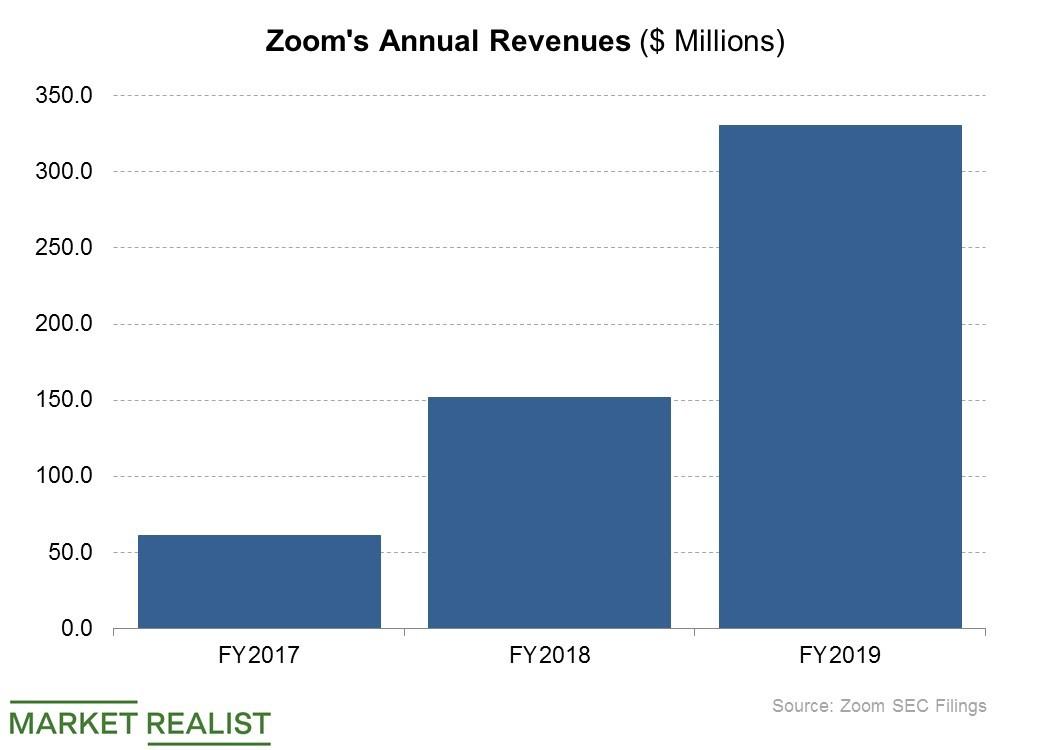
A Look at Zoom’s Most Prominent Customers
Zoom Video Communications (ZM) serves customers of all sizes, from sole businesses to Fortune 50 organizations.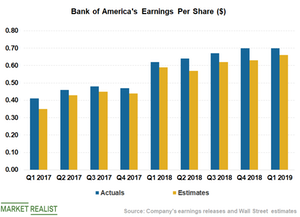
Bank of America’s Asset Quality, Efficiency, and Earnings
Bank of America’s (BAC) credit quality across its consumer and commercial portfolios remained stable at the end of the first quarter.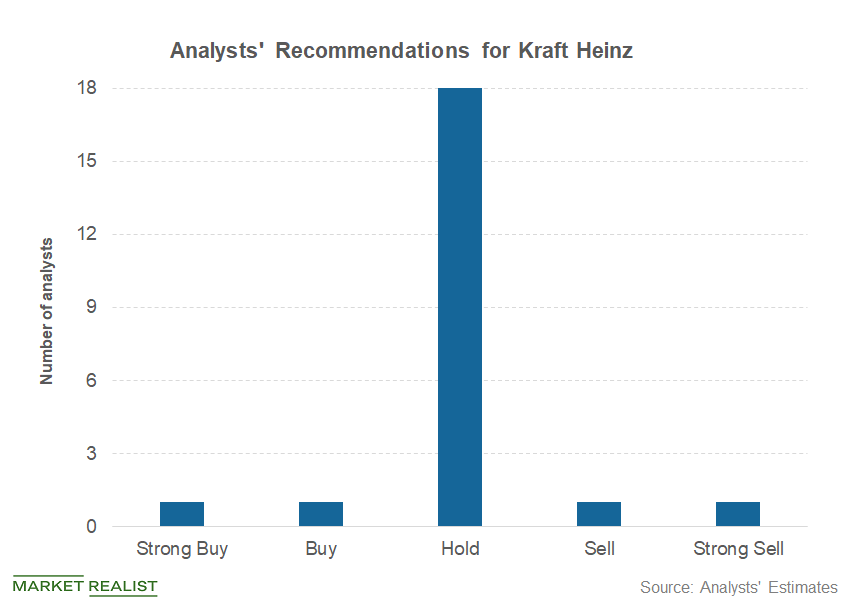
Warren Buffett Isn’t Exiting Kraft Heinz
Buffett said that considering Berkshire Hathaway’s massive stake in Kraft Heinz, it wouldn’t be easy for him to exit the company.
Could Warren Buffett’s Views on Bitcoin Change?
Berkshire Hathaway (BRK-B) chair Warren Buffett has never been a fan of cryptocurrencies like bitcoin.
Bank of America Stock: Analyzing the Uptrend
Bank of America (BAC) has impressed investors with its financial performance. We expect Bank of America to sustain the momentum in 2019.
Wells Fargo to Cut Over 600 Jobs amid Mortgage Business Slowdown
On August 23, Wells Fargo (WFC) announced that it planned to terminate the jobs of 638 employees in its home mortgage division.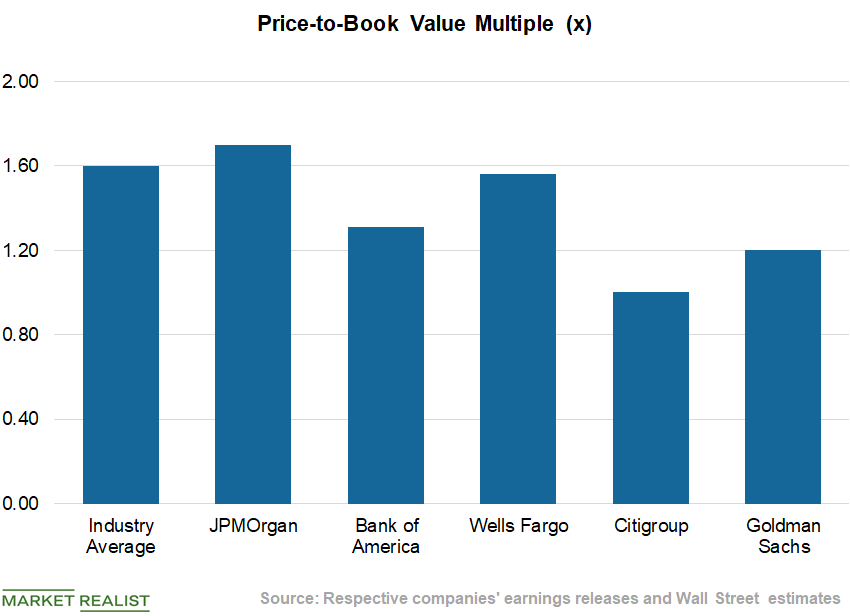
A Look at the Top Five US Banks’ Valuations
On a TTM basis, JPMorgan Chase trades at a price-to-book ratio of 1.7x, while the industry average stands at 1.6x.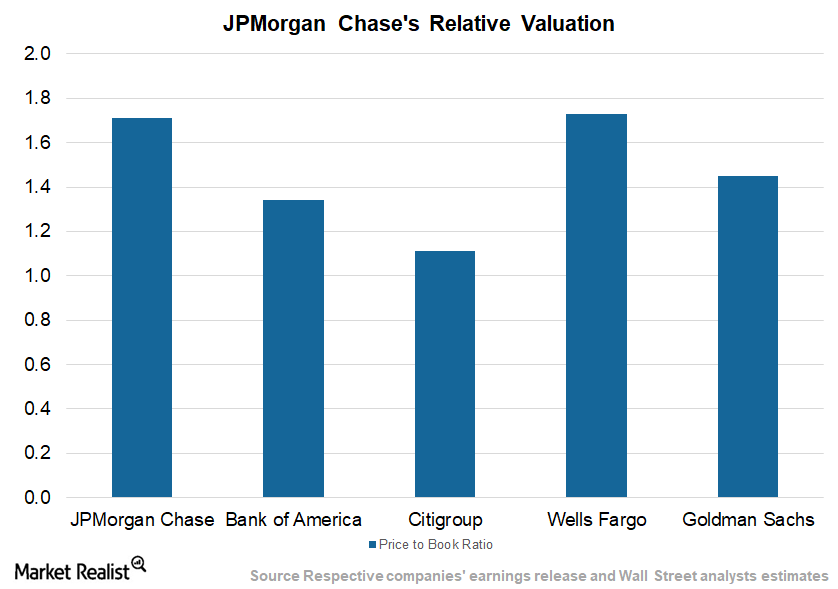
What’s JPMorgan Chase’s Valuation?
JPMorgan Chase (JPM) stock has generated a return of 21.0% in the last six months and 31.3% over the past year.
How Analysts View E*TRADE Financial in February 2018
E*TRADE Financial Corporation (ETFC) is covered by 16 analysts in February 2018. Of these analysts, nine suggested a “strong buy” and three gave “hold” ratings on ETFC.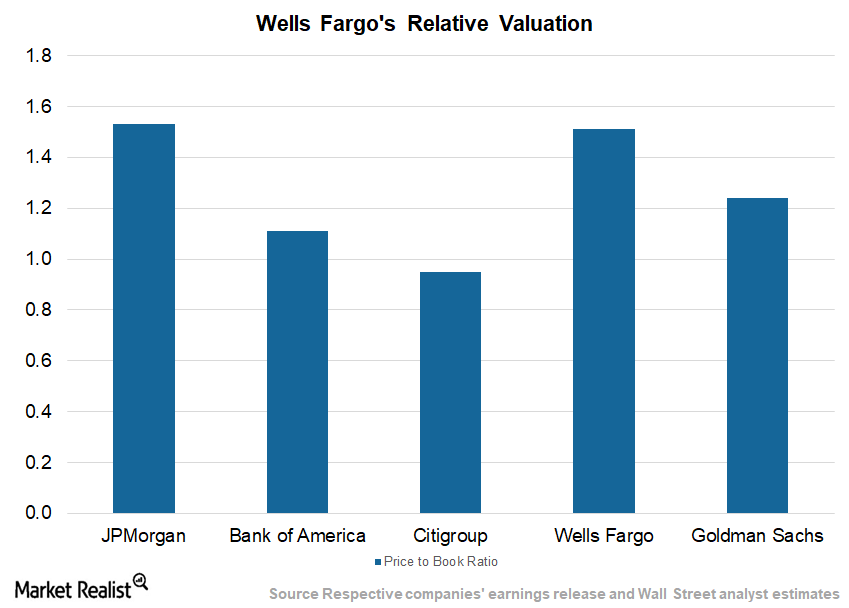
What’s Wells Fargo’s Valuation?
Wells Fargo (WFC) stock has risen 13.0% over the past six months and 10.1% over the past year.
What Do Analysts’ Ratings Suggest for Wells Fargo in 2017?
In May, 13 of the 31 analysts covering Wells Fargo rated the stock as a “buy,” 12 analysts rated it as a “hold,” and six analysts rated it as a “sell.”
What Are Bank of America’s 2017 Growth Drivers?
Bank of America’s CEO has repeatedly discussed the importance of cost controls and how such measures could significantly boost BAC’s earnings over the next few years.
What’s Bank of America’s Interest Rate Risk?
Bank of America (BAC) is extremely sensitive to interest rate changes. Its latest 10-Q filing shows that its asset sensitivity has risen in 2Q15.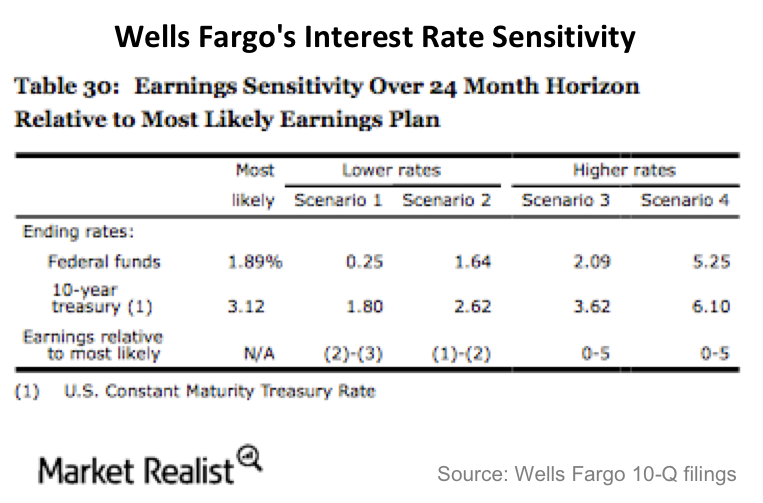
How Sensitive Are Wells Fargo’s Earnings to Interest Rates?
Wells Fargo has the largest loan portfolio among US banks (XLF). As of 2Q16, the bank has a loan portfolio of $952 billion.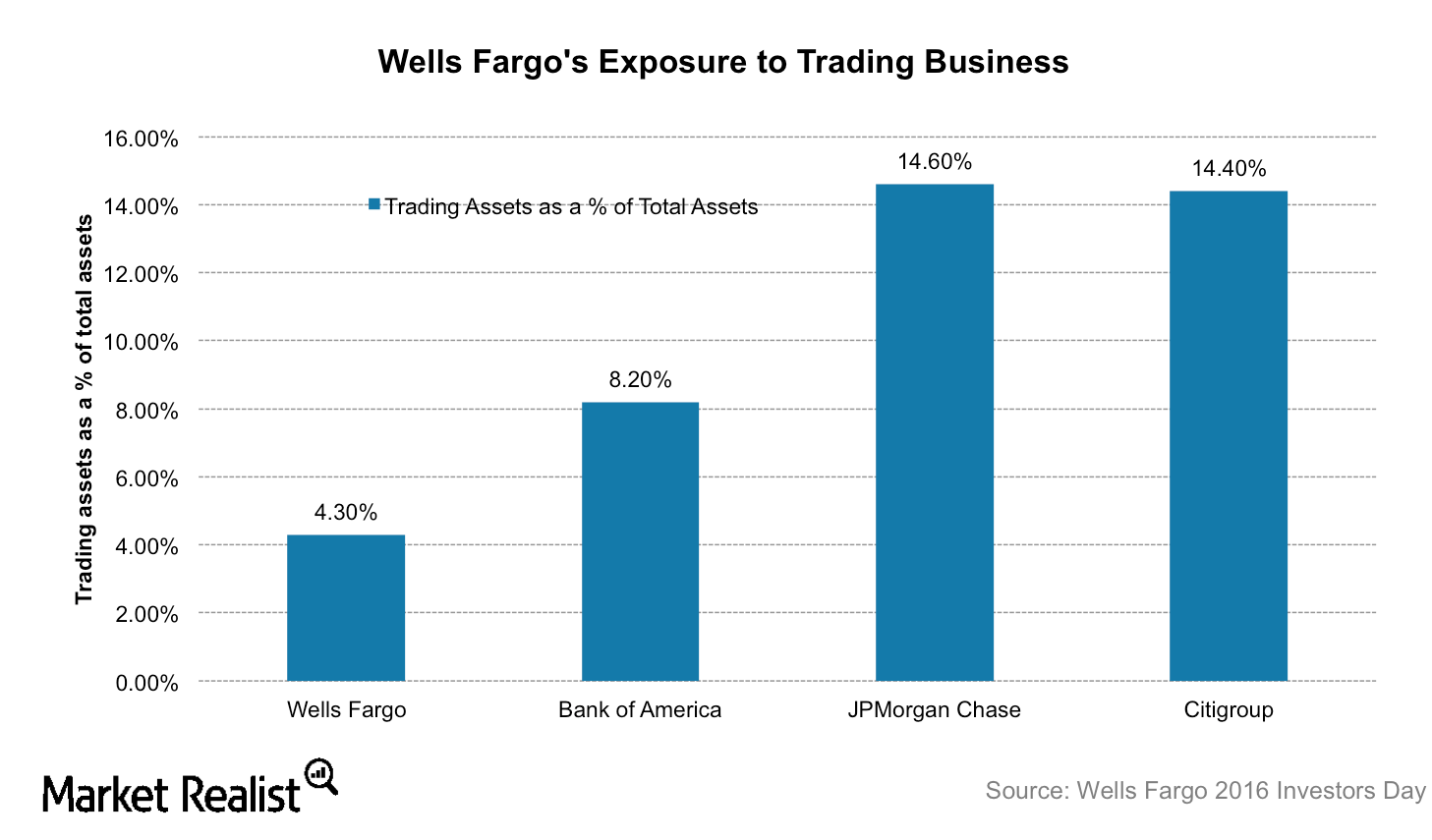
Why Wells Fargo Has a Less Risky Business Model than JPMorgan Chase
Wells Fargo (WFC) is less exposed to the risky investment banking and trading business than its peers JPMorgan Chase (JPM), Citigroup (C), and Bank of America (BAC).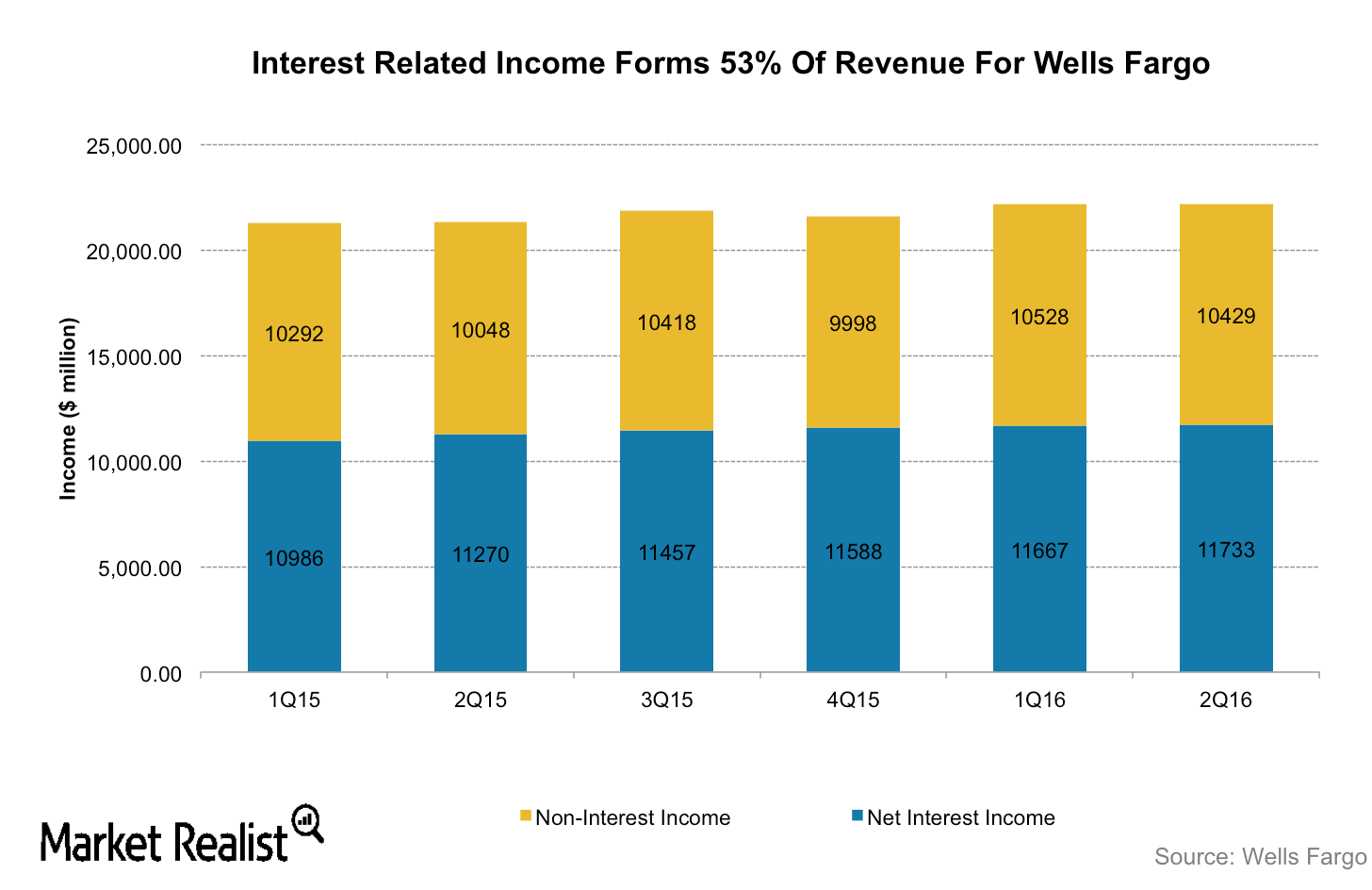
Interest Rate Sensitivity: JPMorgan Chase versus Wells Fargo
For Wells Fargo, net interest income makes up 53% of its total income while for JPMorgan Chase (JPM), net interest income makes up 46% of its total income.
How Does Wells Fargo Compare with JPMorgan Chase on Profitability?
JPMorgan Chase (JPM) and Wells Fargo (WFC) reported profits of $6.2 billion and $5.6 billion, respectively, in the most recent quarter.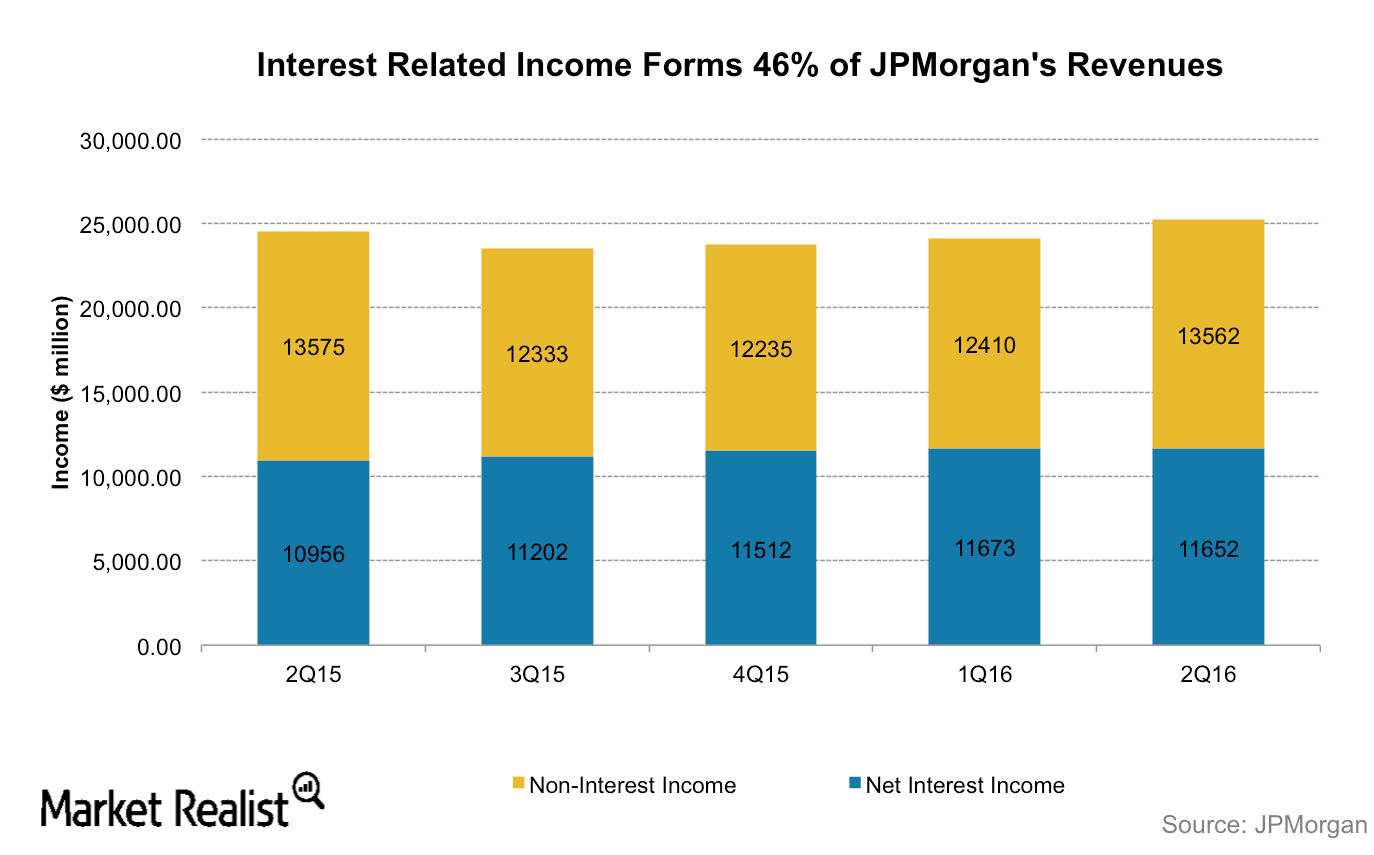
Why BAC Is Better Positioned to Gain from a Rate Hike Than JPM
Bank of America (BAC) is better positioned to gain from an interest rate hike than JPMorgan Chase (JPM). It’s more sensitive to interest rate changes.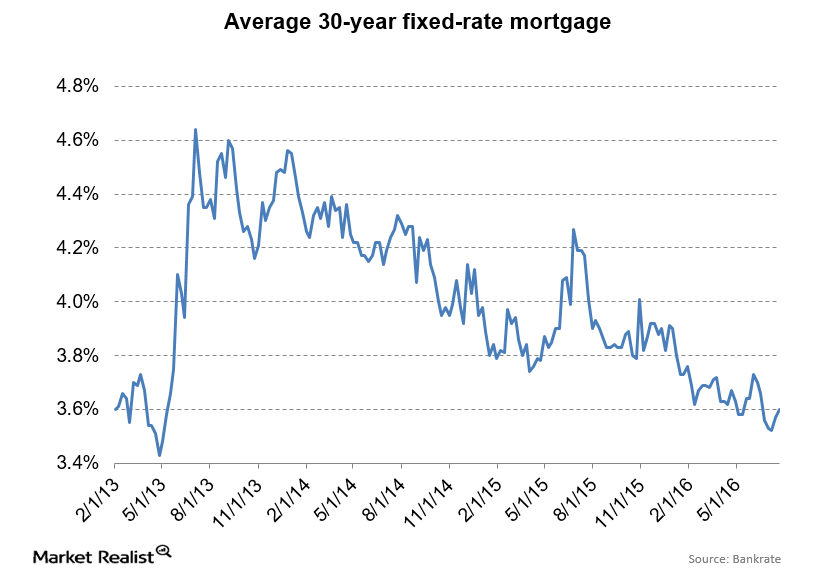
Mortgage Rates Rise with the Bond Market
Lately, mortgage rates and bond yields have shown a weak correlation. Treasury yields have fallen over the past month, while mortgage rates have been steady.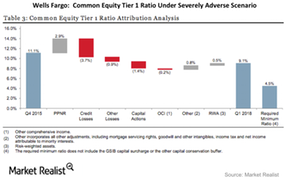
Did Wells Fargo Pass the Fed’s Stress Test?
The Federal Reserve’s stress test results indicate that Wells Fargo (WFC) has sufficient capital to absorb the estimated $25 billion in losses it is projected to incur under the test’s worst-case scenario.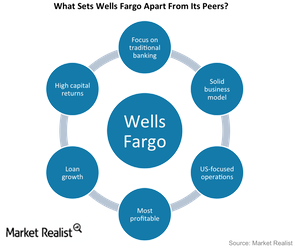
Wells Fargo: What Sets It Apart from Its Peers?
Wells Fargo (WFC) is the largest mortgage lender in the US, operating primarily as a retail and commercial bank. It is been the most profitable bank in its peer group, posting a return of 10% on shareholder’s equity and ~1.3% on assets in 2015.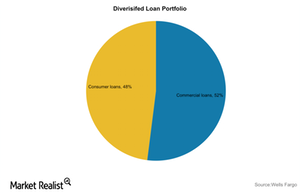
Wells Fargo Benefits from a Solid Business Model
Wells Fargo (WFC) has been considered the strongest and most steady among the “too big to fail” banks in the United States for years.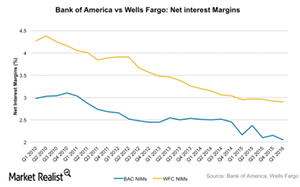
Comparing Wells Fargo and Bank of America’s Profitability
In 1Q16, Wells Fargo’s revenue grew 4% to $22.2 billion. Bank of America’s (BAC) revenue fell 7% YoY (year-over-year) to $19.5 billion.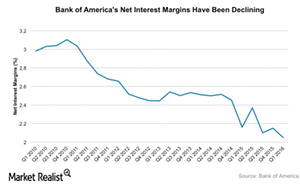
How Sensitive to Interest Rates Has Bank of America Really Become?
Bank of America’s (BAC) earnings are extremely sensitive to interest rate changes. Low interest rates have weighed on the bank’s top line.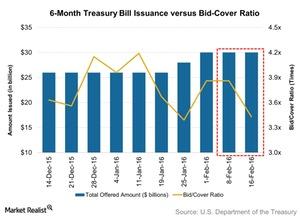
Bid-to-Cover Ratio Fell for 26-Week Treasury Bill Auction
The U.S. Department of the Treasury held the weekly 26-week Treasury bill auction on February 16, 2016. T-bills totaling $30 billion were on offer.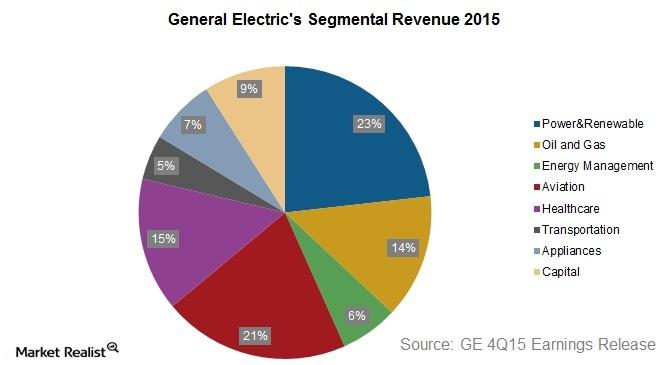
Why General Electric Is Focusing on Industrials?
Originally incorporated in 1892, General Electric is one of the largest and most diversified industrials and financial services corporations in the world.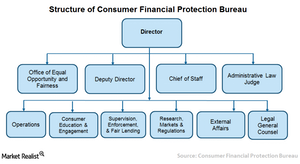
A Look at the Role of the Consumer Financial Protection Bureau
The Consumer Financial Protection Bureau was established to protect consumers’ interests by implementing federal consumer financial laws.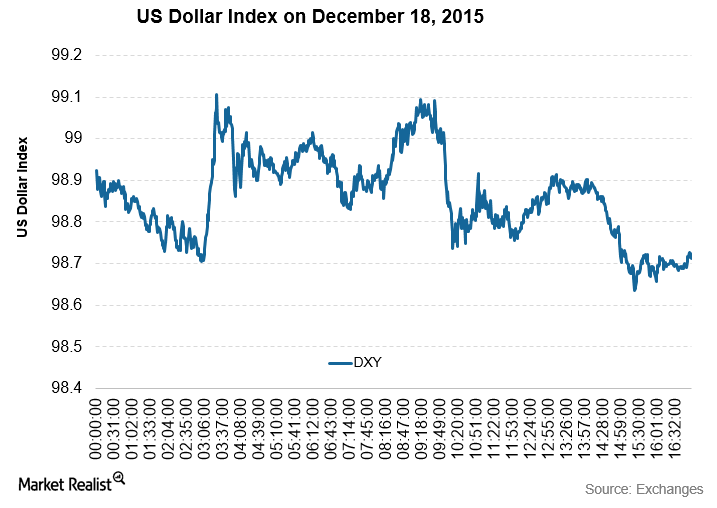
Dollar Index and Services PMI Both Fell
The US Dollar Index measures the strength of the US dollar against other major currencies. It fell by 0.58% on December 18, 2015. It was on a correction mode.
What Is the Dodd-Frank Act?
Analysts who favor the Dodd-Frank Act believe it will protect the investing community and consumers. Critics believe it will hamper economic growth and hurt competitiveness.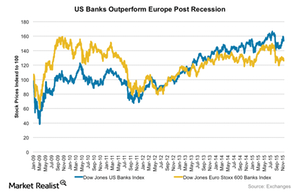
US Banks Played a Pivotal Role in the 2008 Financial Crisis
During the period between September 2008 and March 2009, US stock markets plunged, and the financial sector fell 60% in value.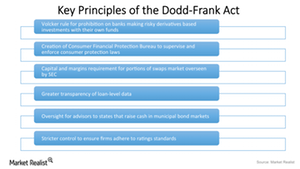
What Is the Dodd-Frank Act?
The Dodd-Frank Act is a financial reform legislation passed in an attempt to prevent events similar to the 2009 financial crisis from occurring again.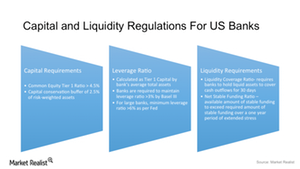
Understanding the Fed’s Financial Regulations Post-2008 Crisis
Since the financial crisis, the Fed has enforced regulations for the capital strength and liquidity of 16 systematically important financial institutions.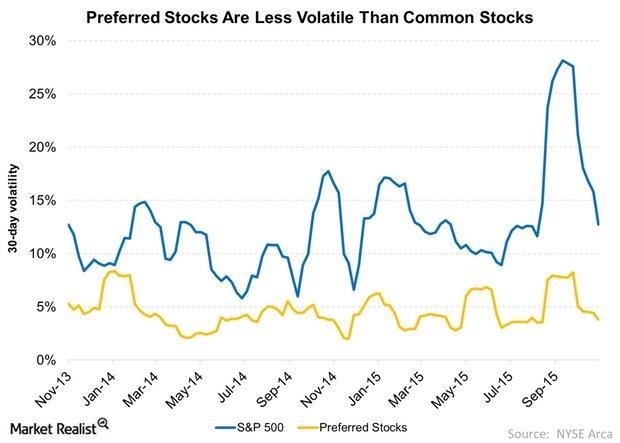
Why Preferred Stocks Are Less Volatile than Common Equities
Preferred stocks are less volatile compared to common equities. This is mainly because a larger portion of the returns comes from dividends, which tend to be stable.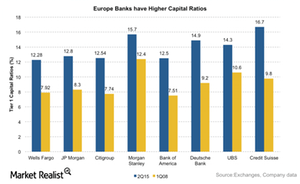
Analyzing US and European Banks’ Leverage Ratios
On average, European banks have higher leverage than US banks. An excess buildup of leverage increases a bank’s exposure to the risk of bankruptcy.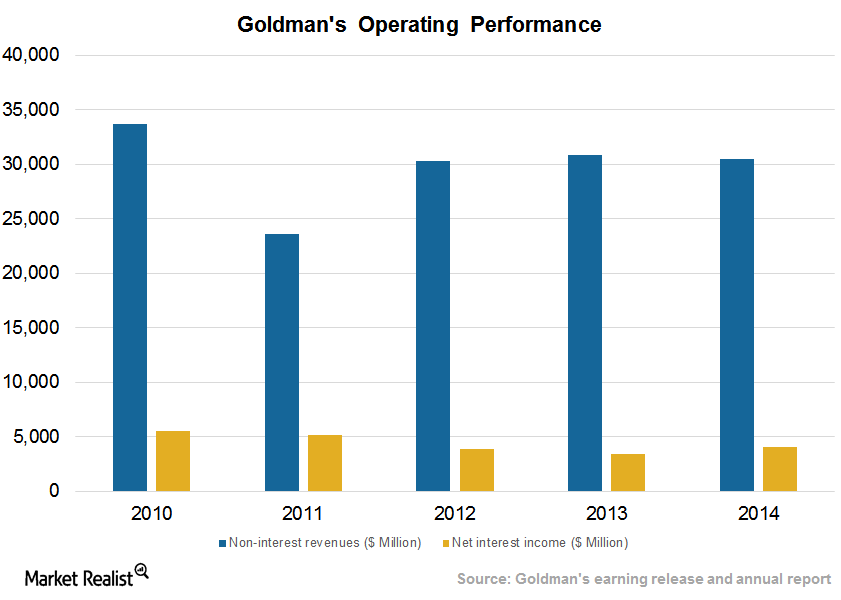
Goldman Sachs’ Revenue Model
Goldman Sachs engages in asset management, investment banking, wealth management, institutional sales, and trading activities across asset classes as well as regions.
Loan-to-Deposit Ratio Moves in the Right Direction for Banks
The ideal loan-to-deposit ratio for a bank depends on the bank’s business model. Some banks that focus on core banking, like U.S. Bancorp (USB), have high loan-to-deposit ratios.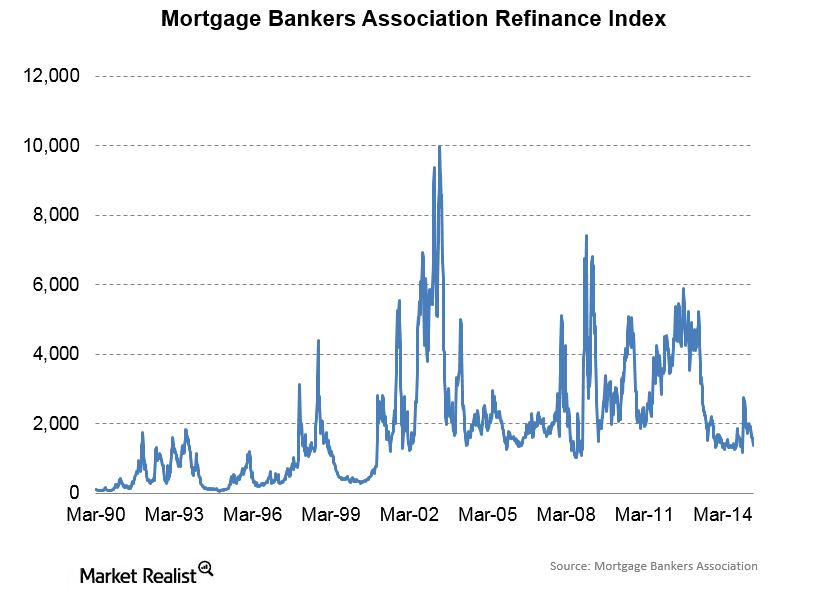
Mortgage Refinances Are Hit by Prepayment Burnout
Refinancing activity affects prepayment speeds. Prepayment speeds occur because homeowners are allowed to pay off their mortgages early and without penalty.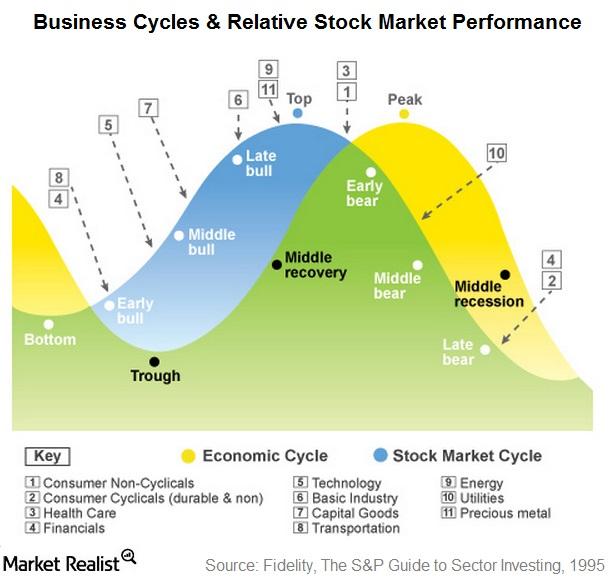
ETFs That Outperform in Late Stage, Recession, and Trough
Certain industries typically outperform at various phases of business cycles. This provides important clues to investors and helps them manage their portfolios.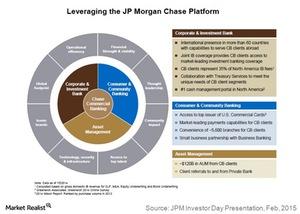
J.P. Morgan: Commercial Banking and Firm-Wide Synergies
J.P. Morgan Commercial Banking clients can access the Consumer and Community Banking segment’s commercial credit cards, payments services, and branch network.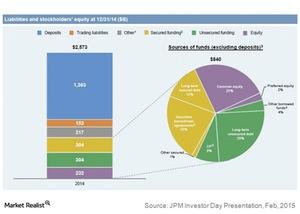
J.P. Morgan and Its Diversified Funding Sources
Banks like US Bancorp (USB) and Wells Fargo (WFC) have an advantage over J.P. Morgan in terms of debt rating. Both banks secure higher ratings.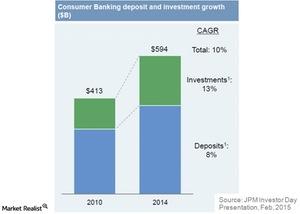
J.P. Morgan Looks to Deepen Customer Relationships
The number of J.P. Morgan active mobile customers has more than tripled since 2010. As a result, the bank is adapting its digital capabilities.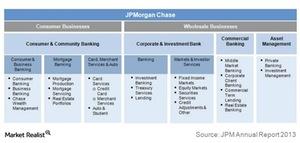
J.P. Morgan’s 4 Operating Segments
Consumer and Community Banking is the biggest of J.P. Morgan’s four segments. Corporate and Investment Banking follows, with 34% of revenues.
J.P. Morgan: The Banking Giant
In this series, you’ll learn what value J.P. Morgan holds for its shareholders, about its various businesses, and how it compares with other big banks.
Why SunTrust Has Lower Net Interest Margins
SunTrust Bank’s net interest income in 2014 remained stable compared to 2013 as strong loan growth offset the decline in net interest margin.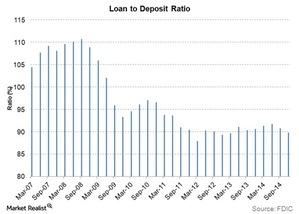
Why Is the Loan-to-Deposit Ratio Declining for US Banks?
The industrywide loan-to-deposit ratio has declined over the last few years, largely due to the increase in non-interest-bearing bank deposits.
Stocks Beat Bonds over the Long Run By a Big Margin
The majority of investors believe bonds are safer than stocks. The main reason is that bonds pay regular interest.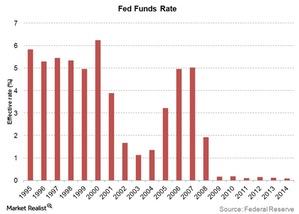
Why Are Interest Rates at an All-time Low?
The quantitative easing policy adopted by the Federal Reserve at the end of 2008 to boost economic growth included a drastic reduction in interest rates.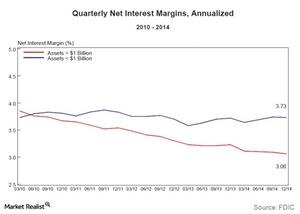
Why Lower Funding Costs Impact Net Interest Margins
Lower funding costs determine a bank’s net interest margin. A bank has funding cost advantage when it pays less interest on borrowed funds and deposits.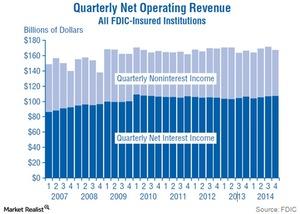
Why Is Interest Income Important to Banks?
Interest income typically contributes more than 60% to a bank’s total operating income.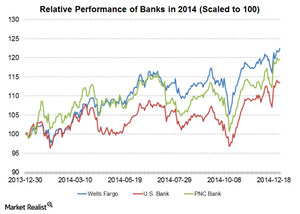
Valuation of PNC Bank is close to historical mean
PNC stock was trading at a PBV ratio of 0.75 in November 2012. Since then, the stock has seen a smart move up and trades at a PBV multiple of ~1.08.
